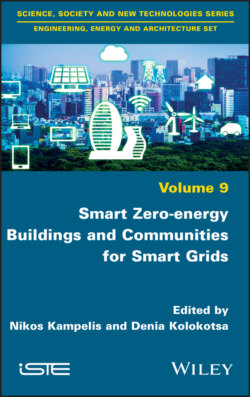Читать книгу Smart Zero-energy Buildings and Communities for Smart Grids - Группа авторов - Страница 15
1.1.2. Demand response (DR)
ОглавлениеDR (Bartusch and Alvehag 2014; Li and Hong 2014) offers the ability to apply changes in the electricity usage by the consumers from their normal consumption patterns in response to changes in electricity pricing over time (Bradley et al. 2013). This leads to lower energy demand during peak hours or during periods that the electricity grid’s reliability is put at risk. Therefore, demand response is a reduction in demand designed to reduce peak load or avoid system emergencies. Hence, demand response can be a more cost-effective alternative than adding generation capabilities to meet the peak and/or occasional demand spikes. The underlying objective of DR is to actively engage customers in modifying their consumption in response to pricing signals. DR is expected to increase energy market efficiency and security of supply, which will ultimately benefit customers by way of providing options for managing their electricity costs, which leads to a reduced environmental impact.
The already available DR programs are generally categorized into incentive and price-based programs. Incentive-based programs provide economic incentives for customers to reduce demand at times of capacity shortage or exceptionally high electricity prices, whereas price-based demand response programs involve dynamic tariff rates that promote general changes in patterns of electricity use. Time-of-use tariffs, which are one of the major price-based DR programs in use involve different unit prices within different blocks of time, and reflect the average cost of utilities during these periods (Bartusch and Alvehag 2014).
There are some efforts at the country level that show the benefits of DR in electricity supply. The policy discussions in the UK on the economic case for DR are analyzed by Bradley et al. (2013). A cost/benefit analysis is performed in a quantitative manner showing that the benefits on a country level are clearly very significant, that is, there was a 2.8% reduction in overall electricity use and a 1.3% shift in peak demand. Moreover, the economic viability of the DR mainly depends on ensuring participation by the end users, that is, the building sector. An increase in participation can be ensured by lowering the participant costs and sharing of benefits. Finally, it is revealed that the actual costs of the infrastructure are also affected by customer engagement and trust. An empirical study for Sweden is performed by Bartusch and Alvehag (2014) in order to estimate the end users’ response to a demand-based time-of-use electricity distribution tariff among Swedish single-family residential houses. The study showed that in the long term, the residential households still respond to the price signals of the tariff by cutting demand in peak hours and shifting electricity consumption from peak to off-peak hours.
Energy efficient smart buildings are possible by integrating a smart meter, smart sockets, domestic renewable energy generation and energy storage systems for integrated energy management, and this integrated system supports demand side load management, distributed generation and distributed storage provisions of future smart grids (Kayo et al. 2014; Keles et al. 2015). Consequently, the effective integration of buildings in smart grids requires appropriate levels of digital technology and interoperability (Oliveira-Lima et al. 2014). The successful implement-station of DR, as mentioned in the previous paragraphs, requires near-real-time power management (Hong et al. 2014) as well as advanced building automation and communication protocols. More information on the various communication protocols that can support the ZEB perspective can be found in Kolokotsa et al. (2011). Recent studies interconnect the ASHRAE BACnet protocol with the wireless Sigsbee protocol to provide DR in the buildings’ energy management side. The addendum announced by ASHRAE specifies that the wireless communication for BACnet will be based on the Zigbee protocol (ANSI/SHRAE standard 135-2010 2013). The interconnection of BACnet with Zigbee allows the management of electrical resources and devices’ load, targeting to optimize and reduce the electricity cost and reduce peak power consumption. The real-time characteristics and functionalities of the BACnet–Zigbee interconnection are examined, showing the potential and critical role of recent developments in the implementation of smart grids’ infrastructure in buildings. Other researchers provide interconnection of the BACnet and EnOcean protocols to measure energy metering of various appliances in buildings and to control the load using wireless communications (Li and Hong 2014). Additionally, the DR using the specific connectivity is shown using experimental facilities that can respond to real-time changes in the electricity price.
